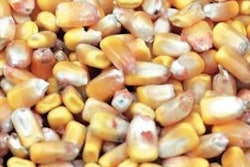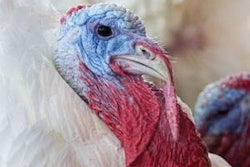From events over recent months it is clear that the appearance of influenza virus H1N1 on the world scene in 2009 was considerably more significant for its impact on international trading in pigmeat than for affecting domestic meat markets. So say pork specialists with the International Meat Secretariat (IMS), the Paris-based organisation that has existed since 1974 as an information exchange for livestock and meat interests worldwide.
H1N1 made world news headlines last year when it was claimed to be a new flu strain capable of causing human disease of possibly pandemic proportions.
Despite many representations by pork industry organisations, government agencies and other official sources referred regularly to ‘swine flu’ because of a reported genetic resemblance to former influenza viruses in pigs. But the industry seems now to have been too pessimistic about what this false label would do for consumer confidence in eating pigmeat.
“I would say with hindsight that the concern was somewhat over-stated,” comments Mick Sloyan, deputy chairman of the pork committee at IMS. “After some initial problems, the reaction of domestic markets has not been as bad as people feared. In talking to pig industry representatives from a number of countries towards the end of 2009, their general view was that H1N1 should be seen mainly for its trade implications. It has not damaged the consumption of pork to the extent that some people forecast would happen.
“We might have expected worse, given some of the media coverage. Most of the news reports in Europe made little reference to a food safety angle, so any serious effect on European pork consumption would perhaps have been surprising. But the coverage by the media in some other places seemed to suggest that the virus could transfer to humans from meat.
“Of course, it is understandable that there was caution at an official level in a country such as China, where food safety and public health have remained sensitive topics after the SARS and avian flu problems. Even there, however, the consumption of pigmeat held up well in 2009, and there was no collapse of market prices.
“At the same time, the IMS pork committee has seen how trade restrictions imposed by various countries because of H1N1 have been damaging to some bigger exporters of pigmeat. There was a period, for example, when customers for the pork exported by the United States insisted that it could not be sourced from certain US states. Canada suffered, for a time, from being the first country to report the transmission of the virus from humans to pigs.
“The International Meat Secretariat backs a declaration signed at the World Pork Conference in Qingdao, China, in September 2009 that amounted almost to a plea on behalf of the whole international pig industry. It said that official measures regarding H1N1 should be based on sound science as reflected in the advice of the World Health Organisation and the world animal health body the OIE. They say that restricting the importation or export of pigmeat on food safety grounds because of H1N1 is not justified scientifically.
“Even if some early caution was understandable, it is reassuring to see today that we have moved a long way from the early days when some countries blocked imports of pork from countries with the virus. The current situation shows a deeper level of understanding of the approach articulated by the WHO and OIE. All international organisations now agree that the trade in pork is not a risk factor in terms of transferring the virus to humans and therefore restrictions on trade should not be put in place.
“The existence of this united view is encouraging. I believe that politicians – and subsequently consumers – have started to see the issue more objectively and so with less concern. Obviously, the pig industry must not relax its guard. It still needs to be clear and careful about biosecurity at farm level, for example. But although a degree of vigilance needs to be maintained, we can keep a sense of proportion and not over-react.
“We can also say categorically that H1N1 is not a serious health threat to pigs. Where the virus has entered a herd, the pigs typically developed only a mild illness. They soon built up an immunity and recovered in about two weeks.
“So this novel influenza virus has not been a big deal on affected pig units, it has had only a marginal effect on the demand for pork at domestic or national level. Its impact on international trade has been greater but hopefully this will be short-lived. This is all very good news for the world’s pig industries at the start of 2010!”


















